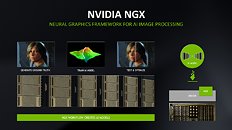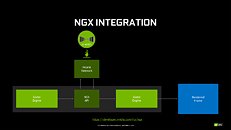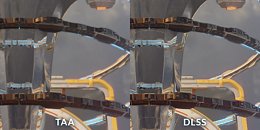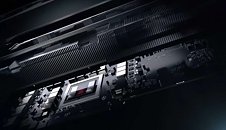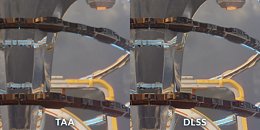
NVIDIA: Image Quality for DLSS in Metro Exodus to Be Improved in Further Updates, and the Nature of the Beast
NVIDIA, in a blog post/Q&A on its DLSS technology, promised implementation and image quality improvements on its Metro Exodus rendition of the technology. If you'll remember, AMD recently vouched for other, non-proprietary ways of achieving desired quality of AA technology across resolutions such as TAA and SMAA, saying that DLSS introduces "(...) image artefacts caused by the upscaling and harsh sharpening." NVIDIA in its blog post has dissected DLSS in its implementation, also clarifying some lingering questions on the technology and its resolution limitations that some us here at TPU had already wondered about.
The blog post describes some of the limitations in DLSS technology, and why exactly image quality issues might be popping out here and there in titles. As we knew from NVIDIA's initial RTX press briefing, DLSS basically works on top of an NVIDIA neural network. Titled the NGX, it processes millions of frames from a single game at varying resolutions, with DLSS, and compares it to a given "ground truth image" - the highest quality possible output sans any shenanigans, generated from just pure raw processing power. The objective is to train the network towards generating this image without the performance cost. This DLSS model is then made available for NVIDIA's client to download and to be run at your local RTX graphics card level, which is why DLSS image quality can be improved with time. And it also helps explain why closed implementations of the technology, such as 3D Mark's Port Royal benchmark, show such incredible image quality scenarios compared to, say, Metro Exodus - there is a very, very limited number of frames that the neural network needs to process towards achieving the best image quality.Forumites: This is an Editorial
The blog post describes some of the limitations in DLSS technology, and why exactly image quality issues might be popping out here and there in titles. As we knew from NVIDIA's initial RTX press briefing, DLSS basically works on top of an NVIDIA neural network. Titled the NGX, it processes millions of frames from a single game at varying resolutions, with DLSS, and compares it to a given "ground truth image" - the highest quality possible output sans any shenanigans, generated from just pure raw processing power. The objective is to train the network towards generating this image without the performance cost. This DLSS model is then made available for NVIDIA's client to download and to be run at your local RTX graphics card level, which is why DLSS image quality can be improved with time. And it also helps explain why closed implementations of the technology, such as 3D Mark's Port Royal benchmark, show such incredible image quality scenarios compared to, say, Metro Exodus - there is a very, very limited number of frames that the neural network needs to process towards achieving the best image quality.Forumites: This is an Editorial
